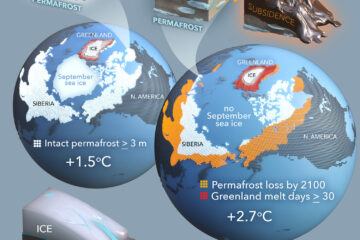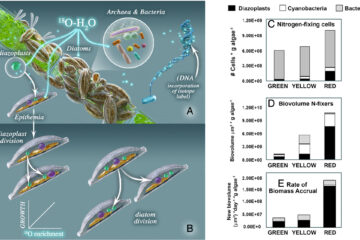Interactions between geomorphology and ecosystem processes in travertine streams–implications for dam decommissioning in Fossil Creek, Arizona.
Travertine deposits of calcium carbonate can dominate channel geomorphology in streams where travertine deposition creates a distinct morphology characterized by travertine terraces, steep waterfalls, and large pools. Algae and microorganisms can facilitate travertine deposition, but how travertine affects material and energy flow in stream ecosystems is less well understood. Nearly a century of flow diversion for hydropower production has decimated the natural travertine formations in Fossil Creek, Arizona. The dam will be decommissioned in 2005. Returning carbonate-rich spring water to the natural stream channel should promote travertine deposition. How will the recovery of travertine affect the ecology of the creek? To address this question, we compared primary production, decomposition, and the abundance and diversity of invertebrates and fish in travertine and riffle/run reaches of Fossil Creek, Arizona. We found that travertine supports higher primary productivity, faster rates of leaf litter decomposition, and higher species richness of the native invertebrate assemblage. Observations from snorkeling in the stream indicate that fish density is also higher in the travertine reach. We postulate that restoring travertine to Fossil Creek will increase stream productivity, rates of litter processing, and energy flow up the food web. Higher aquatic productivity could fundamentally shift the nature of the stream from a sink to a source of energy for the surrounding terrestrial landscape.


